Siquijor is an island province1 of the Philippines located in the Central Visayas2 Region (Region3 VII)4. It has 6 municipalities5: Enrique Villanueva, Larena, Lazi, Maria, San Juan, and Siquijor (the capital, and yes, it has the same name as the province).
The province1 has a long-time reputation as a place of magic, sorcery, and mystical traditions, way before the Spaniards arrived in the Philippines. The island then was the home of the Kingdom of Katugasan (from the word tugas, or Molave trees, that cover the hills, found all over the island). The people lived in caves, traded with the Chinese, and developed the art of traditional healing and witchcraft belief systems. Datu Kihod was their last reigning monarch, sometime during the 16th century. It is also well known for its festivals that focus on healing rituals.
In 1565, this island was discovered by Esteban Rodriguez and Juan Aguirre of the Legaspi6 expedition. Founded in 1783 under the administration of secular clergymen, Siquijor became the first municipality5 as well as the first parish to be established on the island. Siquijor was, from the beginning, administered by the Diocese of Cebu7. That is how the local people started to become Roman Catholics.
The first Augustinian Recollect8 priests arrived in Siquijor in 1794. Several years later, a priest of the same order founded the parishes of Larena (initially called Canoan), Lazi (formerly Tigbawan), San Juan (Makapilay), and Maria (Cang‑meniao). With the exception of Enrique Villanueva, the other five municipalities5 were established as parishes in 1877. No wonder the province has some of the oldest churches in the Philippines. To-date, ninety-five percent of the island’s residents are Roman Catholic.
This province1 showcases the unique culture of blending Catholicism with traditional religious practices – a major part of its people’s cultural heritage, identity and character. Siquijor is a mystical island and it also has 6 Roman Catholic churches9: Let us know more about these centuries-old churches:
1.Our Lady of Divine Providence10 Church (Santa Maria Church) – This is the parish church11 of the town of Maria, established in 1887, known for its famous replica of Santa Rita de Cascia12, or the Black Maria, as the locals call it.
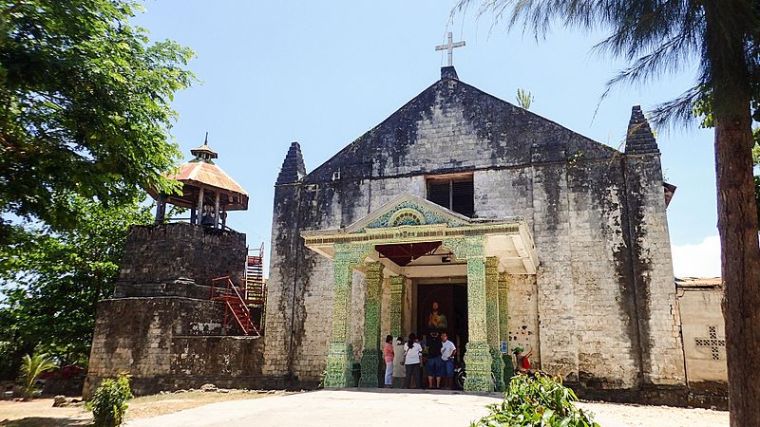 Source: https://commons.wikimedia.org/wiki/File:Santa_Maria_Church_(Maria,_Siquijor).jpg – Franz Miko Verzon – own work
Source: https://commons.wikimedia.org/wiki/File:Santa_Maria_Church_(Maria,_Siquijor).jpg – Franz Miko Verzon – own work
2. Our Lady of Mount Carmel Church (Mount Carmel Church) – This is the parish church11 of the town of Enrique Villanueva, along the island’s Circumferential Road, in honor of Our Lady of Mount Carmel13.
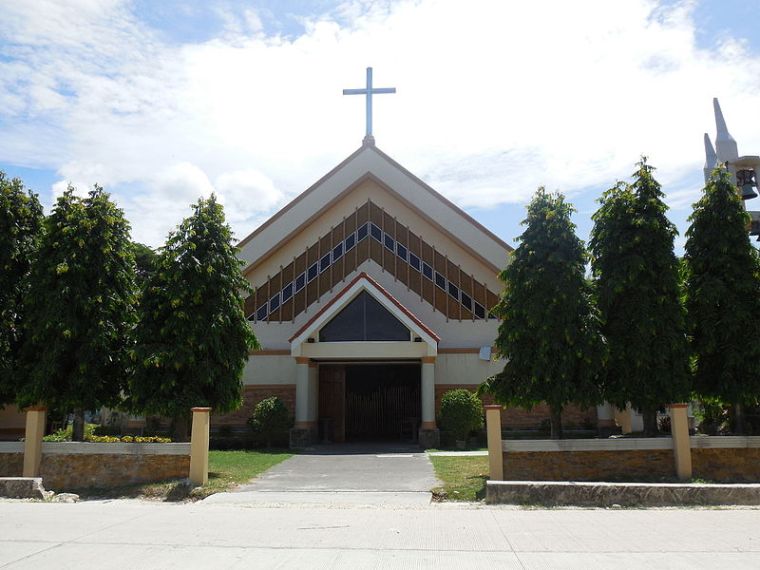 Source: https://commons.wikimedia.org/wiki/File:Mount_Carmel_Church_01.JPG – Lawrence Ruiz – own work
Source: https://commons.wikimedia.org/wiki/File:Mount_Carmel_Church_01.JPG – Lawrence Ruiz – own work
3. St. Augustine Parish (Macapilay Church) – This is the parish church11 of the town of San Juan, built in 1863, in honor of St. Augustine of Hippo14.
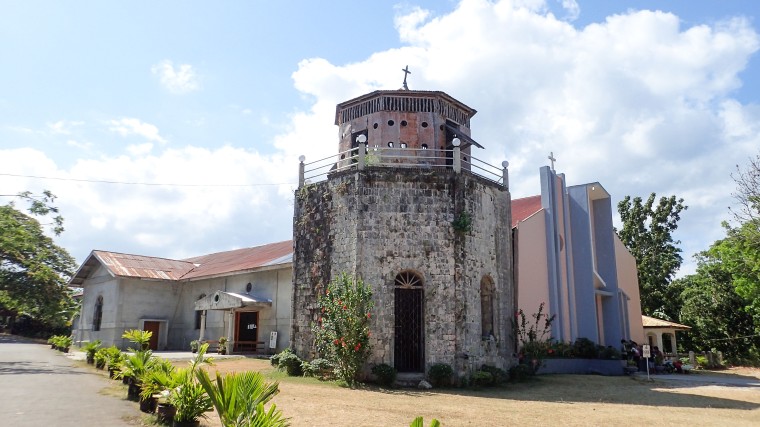 Source: https://commons.wikimeida.org/wiki/File:San_Agustin_Parish_Church.jpg – Franz Miko Verzon – own work
Source: https://commons.wikimeida.org/wiki/File:San_Agustin_Parish_Church.jpg – Franz Miko Verzon – own work
4. St. Francis of Assisi Church (Siquijor Church) – This is the parish church11 of the town of Siquijor, located very near the port, and established under the patronage of St. Francis de Assisi15 on February 1, 1783. A Philippine historical marker16 was issued on May 19, 1984.
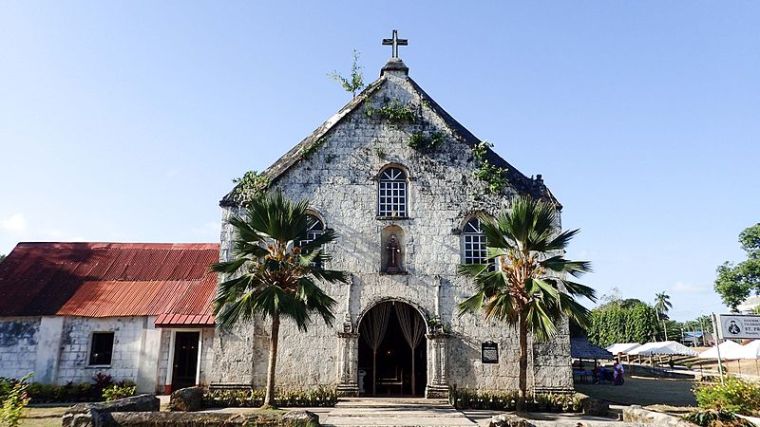 Source: https://commons.wikimedia.org/wiki/St._Francis_of_Assisi_Church_(Siquijor,_Siquijor) – Franz Miko Verzon – own work
Source: https://commons.wikimedia.org/wiki/St._Francis_of_Assisi_Church_(Siquijor,_Siquijor) – Franz Miko Verzon – own work
5. St. Isidore the Farmer17 Church (Lazi Church), or San Isidro Labrador Parish Church – This is the parish church11 of the town of Lazi, founded in 1857 by the Recollects8, and declared a National Historical Landmark18 by the National Historical Commission of the Philippines19 in 1984, and a National Cultural Treasure20 by the National Museum of the Philippines21 in 2001. It was also nominated to be part of the UNESCO World Heritage Sites22 Tentative List since 2006, under the collective group of Baroque23 Churches of the Philippines (Extension). See my post: (I will place a link here). It also has one of the largest convents in the Philippines, located at the opposite side of the street, facing the church. A Philippine historical marker16 was issued on May 19, 1984.
 Source: https://commons.wikimedia/wiki/File:Lazi_Church_01.JPG – Lawrence Ruiz – own work
Source: https://commons.wikimedia/wiki/File:Lazi_Church_01.JPG – Lawrence Ruiz – own work
6. Saint Vincent Ferrer Church (Larena Church) – This is the parish church11 of the town of Larena, erected on June 14, 1836, with the advocacy of San Vicente Ferrer24.
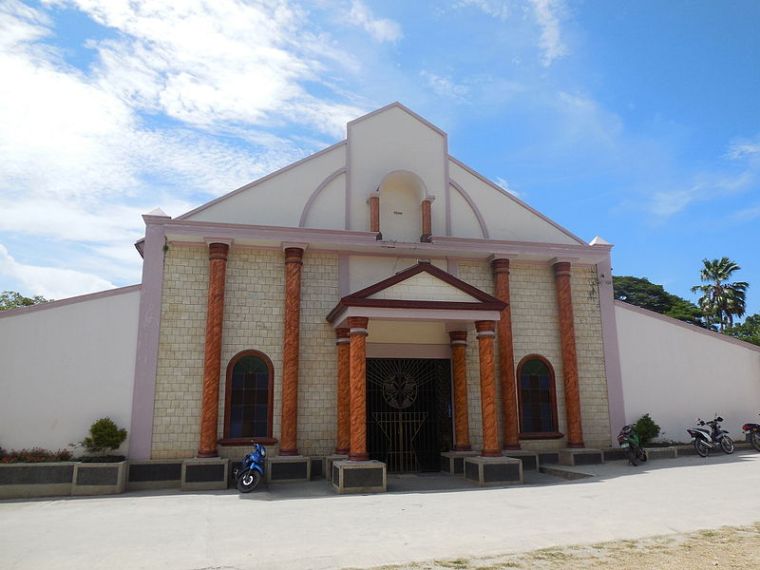 Source: https://commons.wikimedia/wiki/File:St._Vincent_Ferrer_Church_in_Larena.JPG
Source: https://commons.wikimedia/wiki/File:St._Vincent_Ferrer_Church_in_Larena.JPG
The information was obtained from the Wikipedia page “Siquijor”25, “List of Historical Markers of the Philippines in Central Visayas”26 and “List of Cultural Properties of the Philippines in Central Visayas”27
You can read related posts about my Siquijor tour: SAN ISIDRO LABRADOR PARISH CHURCH AND CONVENT, SIQUIJOR, PALITON BEACH: THE LITTLE BORACAY OF SIQUIJOR, GET BEWITCHED AT HAPITANAN, SIQUIJOR, Now You Know – SIQUIJOR: ITS LEGEND, HISTORY, TRADITIONS, AND BELIEFS, ENCHANTING 400-YEAR-OLD BALETE TREE AND FISH SPA, SIQUIJOR, TAKE A TARZAN-LIKE DIVE AT CAMBUGAHAY FALLS, SIQUIJOR!, and SERENE AND SPONTANEOUS SALAGDOONG BEACH, SIQUIJOR.
This is not a sponsored post. I just want my readers to know more about the Philippines.
Did you find this post informative? I would like to hear from you re the six Roman Catholic churches of Siquijor. Simply scroll and click “Leave a comment”.
See other interesting places through other posts in this category and other categories of SCapades, Pinoy Delights, and Smart Travelers – Foreign Travelers Ask, Now You Know, and Say, Say, Say. Happy reading, and I hope that you will appreciate what I shared and some of the featured destinations will be part of your future travel plans!
Remember to share this post with your friends, follow me by clicking on the bottom right corner of your device, and do not forget to like this post. Thank you.
– – – – – – – – – – – – – – – – – – – – – – – – – –
The following terms are defined for interested readers, especially non-Filipinos, those with “Senior-Moments”, and those too busy or lazy to Google such terms:
1A province is the primary administrative and political division in the Philippines. It is the second-level administrative sub-division of a region3. There are 81 provinces (called “lalawigan”) in the Philippines. Each province is governed by an elected legislature called the Sangguniang Panlalawigan and by an elected governor. Remember, a province in the Philippines is divided into cities28 and municipalities5 (or towns), which in turn, are divided into barangays29, formerly called barrios. The information was obtained from Wikipedia page “Provinces of the Philippines.”30 See a related post: Foreign Seniors Ask: WHAT ARE PROVINCES IN THE PHILIPPINES?
2Visayas is one of the 3 major geographical divisions of the Philippines. It covers 3 administrative regions3: Central Visayas4, Eastern Visayas and Western Visayas. It consists of 6 major islands (Bohol, Cebu, Leyte, Negros, Panay and Samar), mostly surrounded by the Visayan Sea, and is composed of 16 provinces1, according to Wikipedia page “Visayas”.31 Visayas is located at the middle part of the country; the 2 other geographical divisions of the Philippines are Luzon (in the northern part) and Mindanao (in the southern part).
3A region is the first-order administrative division in the Philippines. There are 17 regions in the Philippines, based on geographical, cultural and ethnological characteristics. It is further subdivided in provinces1, composed of cities28 and municipalities5 (or towns), which in turn, are divided into barangays29. The regions were initially identified in 1972, through Presidential Decree No. 1 of President Ferdinand Marcos. Since then, other regions have been created and some provinces have been “transferred” to another region. The information was obtained from Wikipedia page “Regions of the Philippines.”32 See a related post: Foreign Seniors Ask: WHAT ARE THE REGIONS OF THE PHILIPPINES?
4Central Visayas (Region VII) of the Philippines is a Philippine region3 located in the island group of Visayas2, with Cebu City as its regional center. It has 7 local government units33 (LGUs): Bohol, Cebu, Cebu City, Lapu-Lapu, Mandaue, Negros Oriental, and Siquijor. The information was obtained from Wikipedia page “Regions of the Philippines.”32
5A municipality is a small, single urban administrative division, or local government unit (LGU)33, in the Philippines which has corporate status and powers of self-government or jurisdiction as granted by law. It is a unit under a province1, subdivided into barangays29, and is called town, or bayan. In the Philippines, a municipality is headed by a mayor, a vice mayor and members of the Sangguniang Bayan (legislative branch). It can enact local policies and laws, enforce them, and govern its jurisdictions. It can enter into contracts and other transactions through its elected and appointed officials, and can tax as well. It enforces all local and national laws. The information was obtained from Wikipedia page “Municipalities of the Philippines.”34
6Miguel Lopez de Legazpi (1502-August 20, 1572), also known as El Adelantado and El Viejo (The Elder), was a Spanish navigator and governor who established the first Spanish settlement in the East Indies when his expedition crossed the Pacific Ocean, from the Viceroyalty of New Spain, in modern-day Mexico, and arrived in Cebu, in the Philippines. The information was obtained from Wikipedia page “Miguel Lopez de Legazpi.”35
7The Roman Catholic Archdiocese of Cebu is a Roman Rite36 archdiocese of the Roman Catholic Church in the Philippines, and one of the ecclesiastical provinces of the Roman Catholic Church in the country. It is composed of the entire civil province of Cebu. It is the Mother Church of the Philippines, established as a diocese on August 14, 1595, and as an archdiocese on April 28, 1934. The jurisdiction, Cebu, is considered as the fount of Christianity in the Far East. The seat of the archdiocese is the Metropolitan Cathedral and Parish of Saint Vitalis and of the Immaculate Conception, more commonly known as the Cebu Metropolitan Cathedral. The information was obtained from Wikipedia page “Roman Catholic Archdiocese of Cebu.”37
8The Recollects were a French reform branch of the Order of Friars Minor created at the end of the 15th century, commonly known today as the Franciscans, best known for their presence as missionaries in various parts of the world. They wore gray habits and pointed hoods, took vows of poverty, and devoted their lives to prayer, penance, and spiritual reflection. In 1897, Pope Leo XIII officially dissolved the Recollects order and integrated it as a part of the Franciscan order, officially changing their name to Friars Minor. The information was obtained from the Wikipedia page “Recollects”.38
9https://www.tripzilla.ph/siquijor-visita-iglesia-guide/102
10Our Lady of Divine Providence is a title of the Blessed Virgin Mary, Mother of Jesus, often traced to Her intervention and foresight for Jesus’ first miracle, turning water to wine at the wedding in Cana, to avoid an embarrassing situation for the newlywed couple. She is identified as Queen of the Home, with Her feast day celebrated on November 19, and devotion to Her originated in Italy. The information was obtained from the Wikipedia page “Our Lady of Divine Providence”.39
11A parish church, or parochial church, in Christianity, is the church which acts as the religious center of a parish in many parts of the world. The parish church, especially in rural areas, may play a significant role in community activities, often allowing its premises to be used for non-religious community events. The information was obtained from the Wikipedia page “Parish church”.40
12Saint Rita of Cascia, born Margherita Lotti (1381 – 22 May 1457), was an Italian widow and Augustinian nun venerated as a saint in the Roman Catholic Church. She joined the Augustinian community of religious sisters after her abusive husband was murdered. There, she was known for the efficacy of her prayers, often portrayed with a bleeding wound on her forehead, understood to indicate a partial stigmata, with various miracles attributed to her intercession. She was canonized on May 24, 1900 by Pope Leo XIII, and her feast day is celebrated on May 22. She was bestowed the title of Patroness of Impossible Causes, and also came to be known as the patroness of abused wives and heartbroken women. The information was obtained from the Wikipedia page “Saint Rita of Cascia”.41
13Our Lady of Mount Carmel is the title given to the Blessed Virgin Mary in Her role as Patroness of the Carmelite Order since the first Christian hermits lived on Mount Carmel in the Holy Land during the late 12th and early to mid-13th century. Readers, you can pray to Her for protection from harmful and dangerous situations, and deliverance of souls from Purgatory. The information was obtained from the Wikipedia page “Our Lady of Mount Carmel”.42
14Saint Augustine of Hippo (13 November 354 – 23 August 430) was a Roman African, early Christian theologian and philosopher from Numidia (a Roman province on the North African coast), whose writings influenced the development of Western Christianity and Western philosophy. He was Bishop of Hippo Regius (the ancient name of the modern city of Annaba, in Algeria) in North Africa and is viewed as one of the most important Church fathers in Western Christianity for his writings. He is the Patron of Augustinians, and is the Patron Saint for brewers, printers, theologians, and the alleviation of sore eyes. The information was obtained from the Wikipedia page “Saint Augustine of Hippo”.43
15Saint Francis of Assisi (1181/1182 – 3 October 1226), informally called Francesco, was an Italian Catholic friar, deacon and preacher. He founded the men’s Order of Friars Minor, the women’s Order of Saint Claire, the Third Order of Saint Francis, and the Custody of the Holy Land. He was canonized on July 16, 1228, and designated as the Patron Saint of Italy, and later became associated with the patronage of animals and the natural environment. The information was obtained from the Wikipedia page “Saint Francis of Assisi”.44
16A historical marker, commemorative plaque, historical plaque, or simply plaque, is a plate of metal, ceramic, stone, wood, or other material, typically attached to a wall, stone, or other vertical surface, and bearing text or an image in relief, or both, to commemorate one or more persons, an event, a former use of the place, or some other thing. Many modern plaques are used to associate the location where the plaque is installed with the person, event, or item commemorated as a place worthy of visit. The information was obtained from the Wikipedia page “Commemorative plaque”.45
17Saint Isidore the Farm Laborer, or Isidore the Farmer (c. 1070 – 15 May 1130/1142) was a Spanish farm worker known for his piety towards the poor and animals. His feast day is celebrated on May 15, and is the Patron Saint of farmers, agriculture and day laborers. The information was obtained from the Wikipedia page “Saint Isidore the Farm Laborer”.46
18A National Historical Landmark of the Philippines is a place or an object that is associated with an event, achievement, characteristics or modification that presents a turning point or stage in history. The information was obtained from the Wikipedia page “Category: National Historical Landmarks of the Philippines”.47
19The National Historical Commission of the Philippines (NHCP) is a government agency of the Philippines which promotes Philippine history and cultural heritage through research, dissemination, conservation, sites management, and heraldry works, thereby inculcating awareness and appreciation of the noble deeds and ideals of our heroes and other illustrious Filipinos, instilling pride in the Filipino people, and rekindling the Filipino spirit through the lessons of history. The information was obtained from the Wikipedia page “National Historical Commission of the Philippines”.48
20A National Cultural Treasure (NCT) of the Philippines is a tangible (movable and immovable) or intangible heritage property declared by the National Commission for Culture and Arts49 and other cultural agencies such as the National Museum of the Philippines21, National Library of the Philippines50, and National Archives of the Philippines51. Such declarations are authorized under the National Cultural Heritage Act of 200952 and recognized within the Cultural Properties of the Philippines53 by the Philippine government. The title of NCT is the highest designation given to a “unique cultural property found locally, possessing outstanding historical, cultural, artistic and/or scientific value which is highly significant and important to the country and nation”.54 The information was obtained from the Wikipedia page “National Cultural Treasure”.55
21The National Museum of the Philippines is a government institution in the Philippines which serves as the educational, scientific and cultural institution in preserving the various permanent national collections featuring the ethnographic, anthropological, archaeological and visual artistry of the Philippines. It was formed on October 29, 1901, with headquarters in Padre Burgos Avenue, in Rizal Park, Ermita, Manila. Since 1998, it has been the regulatory and enforcement agency of the national government in restoring and safeguarding important cultural properties, sites and reservations throughout the Philippines. It is under the Department of Education and the National Commission for Culture and Arts49. The information was obtained from the Wikipedia page “National Museum of the Philippines”.56 Visit its website: www.nationalmuseum.gov.ph
22A UNESCO World Heritage Site (WHS) is a unique landmark, or geographically and historically identifiable place which is selected by the United Nations Educational, Scientific and Cultural Organization (UNESCO) as having cultural, historical, scientific, physical or other form of significance, and is legally protected by international treaties. Sites are demarcated by UNESCO as protected zones. The list is maintained by the International World Heritage Program administered by the UNESCO World Heritage Committee, composed of 21 state parties which are elected by the General Assembly. Under certain conditions, listed sites can obtain funds from the World Heritage Fund. The information was obtained from the Wikipedia page “World Heritage Site”.57
23Baroque architecture began in Rome, Italy, in the late 16th century, which conveys grandeur and drama, most often used in palaces and churches. It includes curving forms, oval shapes, and a combination of concave and convex forms that make walls seem to undulate, or appear wavy, with a strong sense of motion. It groups things together like columns and decorative flourishes on building surfaces. Architectural elements are repeated across a surface. It uses distortion to make figures elongated, broken, or manipulated in some manner to make them stand out. Buildings have columns, sometimes topped with capitals and large volutes, scroll, or spiral forms. Sculptural wall elements will often project from the surface which is full of forms to increase the interplay of light and shadow across them. Inside, Baroque structures will often have ceilings painted in bright colors, made to fool one’s eye into believing one is looking at the sky. Buildings also have very rich surface treatments, including interiors with stucco58, various colored marbles, and gold gilt or thin sheets of gold applied to surfaces. Most Baroque churches have vaulted ceilings, supported by a series of interconnected arches.59
24Saint Vincent Ferrer (23 January 1350 – 5 April 1419) was a Valencian Dominican friar who gained acclaim as a missionary and logician. He is the Patron Saint of builders, prisoners, construction workers, plumbers, fishermen, and Spanish orphanages. He is honored as a saint of the Roman Catholic Church and other churches of Catholic traditions, like the Iglesia Filipina Independiente. The information was obtained from the Wikipedia page “Vincent Ferrer”.60
25“Siquijor,” accessed March 3, 2019, https://en.m.wikipedia.org/wiki/Siquijor
26“List of historical markers of the Philippines in Central Visayas”, accessed March 3, 2019, https://en.wikipedia.org/wiki/List_of_historical_markers_of_the_Philippines_in_Central_Visayas
27“List of Cultural Properties of the Philippines in Central Visayas”, accessed March 3, 2019, https://en.wikipedia.org/wiki/List_of_Cultural_Properties_of_the_Philippines_in_Central_Visayas
28A city is the local government unit33 in the Philippines headed by a mayor elected by popular vote. A vice mayor serves as the presiding officer of the Sangguniang Panlungsod (city council), which acts as the city’s legislative body. The information was obtained from Wikipedia page “Cities of the Philippines.”61
29A barangay in the Philippines is the smallest administrative division in the Philippines, headed by a barangay captain, aided by a Sangguniang Barangay (Barangay Council). It is the native Filipino term for a district or village. It was formerly called a barrio. In a metropolitan area, a barangay is an inner city neighborhood, a suburb, or a suburban neighborhood. The word barangay originated from the term “balangay”, a kind of boat used by a group of Austronesian people who migrated to the Philippines. A number of barangays grouped together is called a district. The information was obtained from Wikipedia page “Barangay.”62
30“Provinces of the Philippines,” accessed July 17, 2018, https://en.wikipedia.org/wiki/Provinces_of_the_Philippines
31“Visayas,” accessed January 29, 2019, https://en.wikipedia.org/wiki/Visayas
32“Regions of the Philippines,” accessed January 29, 2019, https://en.wikipedia.org/wiki/Regions_of_the_Philippines
33A local government unit (LGU) in the Philippines is divided into 3 levels: provinces1 and independent cities63; component cities64 and municipalities5; and, barangays29, according to Wikipedia page “Local government in the Philippines”.65
34“Municipalities of the Philippines,” accessed January 29, 2019, https://en.wikipedia.org/wiki/Municipalities_of_the_Philippines
35“Miguel Lopez de Legazpi,” accessed January 29, 2019, https://en.wikipedia.org/wiki/Miguel_Lopez_de_Legazpi
36The Roman rite is the most widespread liturgical rite in the Catholic Church as well as the most popular and widespread Rite in all of Christendom. It has been adapted over the centuries and the history of its Eucharistic liturgy can be divided into 3 stages: the Pre-Tridentine Mass, Tridentine Mass, and the Mass of Paul VI (the current form of the Mass in the Catholic Church). The information was obtained from Wikipedia page “Roman rite.”66
37“Roman Catholic Archdiocese of Cebu,” accessed January 29, 2019, https://en.wikipedia.org/wiki/Roman_Catholic_Archdiocese_of_Cebu
38“Recollects,” accessed January 29, 2019, https://en.wikipedia.org/wiki/Recollects
39“Our Lady of Divine Providence,” accessed January 29, 2019, https://en.wikipedia.org/wiki/Our_Lady_of_Divine_Providence
40“Parish church,” accessed January 29, 2019, https://en.wikipedia.org/wiki/Parish_church
41“Saint Rita of Cascia,” accessed January 29, 2019, https://en.wikipedia.org/wiki/Saint_Rita_of_Cascia
42“Our Lady of Mount Carmel,” accessed January 29, 2019, https://en.wikipedia.org/wiki/Our_Lady_of_Mount_Carmel
43“Saint Augustine of Hippo,” accessed January 29, 2019, https://en.wikipedia.org/wiki/Saint_Augustine_of_Hippo
44“Saint Francis of Assisi,” accessed January 29, 2019, https://en.wikipedia.org/wiki/Saint_Francis_of_Assisi
45“Commemorative plaque,” accessed January 29, 2019, https://en.wikipedia.org/wiki/Commemorative_plaque
46“Saint Isidore the Farm Laborer,” accessed January 29, 2019, https://en.wikipedia.org/wiki/Saint_Isidore_the_Farm_Laborer
47“Category: National Historical Landmarks of the Philippines,” accessed October 16, 2018, https://en.wikipedia.org/wiki/Category:_National_Historical_Landmarks_of_the_Philippines
48“National Historical Commission of the Philippines,” accessed October 16, 2018, https://en.wikipedia.org/wiki/National_Historical_Commission_of_the_Philippines
49“National Commission for Culture and Arts,” accessed October 16, 2018,https://en.wikipedia.org/wiki/National_Commission_for_Culture_and_Arts
50“National Library of the Philippines,” accessed October 16, 2018, https://en.wikipedia.org/wiki/National_Library_of_the_Philippines
51“National Archives of the Philippines,” accessed October 16, 2018,https://en.wikipedia.org/wiki/National_Archives_of_the_Philippines
52“National Cultural Heritage Act,” accessed October 16, 2018, https://en.wikipedia.org/wiki/National_Cultural_Heritage_Act
53“Cultural properties of the Philippines,” accessed October 16, 2018,https://en.wikipedia.org/wiki/Cultural_properties_of_the_Philippines
55“National Cultural Treasure,” accessed October 16, 2018, https://en.wikipedia.org/wiki/National_Cultural_Treasure
56“National Museum of the Philippines,” accessed October 16, 2018, https://en.wikipedia.org/wiki/National_Museum_of_the_Philippines
57“World Heritage Site,” accessed October 16, 2018, https://en.wikipedia.org/wiki/World_Heritage_Site
58Stucco refers to the cement-based and fine plaster used for coating wall surfaces or molding into architectural decorations. It hardens into a highly durable material that requires little maintenance and can be used to obtain different textures and finishes.67
59https://study.com/academy/lesson/italian-baroque-architecture-characteristics-examples.html
60“Vincent Ferrer,” accessed January 29, 2019, https://en.wikipedia.org/wiki/Vincent_Ferrer
61“Cities of the Philippines,” accessed January 29, 2019, https://en.wikipedia.org/wiki/Cities_of_the_Philippines
62“Barangay,” accessed January 29, 2019, https://en.wikipedia.org/wiki/Barangay
63An independent city is a type of city28 in the Philippines which is administratively and legally not subject to a province1 so it does not share its tax revenues with any province. The national government and its agencies serve such a city through sub-offices of the region3 it belongs to. It is subdivided into 2: highly urbanized city68 or independent component city69. The information was obtained from Wikipedia page “Cities of the Philippines”61
64A component city is a type of city28 in the Philippines which does not meet the requirements of a highly urbanized city68. It is under the jurisdiction of a province1. If such a city is located along the boundaries of 2 or more provinces, it shall be considered part of the province of which it used to be a municipality5. The information was obtained from Wikipedia page “Cities of the Philippines”61
65“Local government in the Philippines,” accessed January 29, 2019, https://en.wikipedia.org/wiki/Local_government_in_the_Philippines
66“Roman rite,” accessed January 29, 2019, https://en.wikipedia.org/wiki/Roman_rite
67https://www.thebalancesmb.com/choose-right-stucco-mix-844655
68A highly urbanized city (HUC) is a type of city28 in the Philippines with a minimum population of 200,000 as certified by the Philippine Statistics Authority (PSA), and with the latest annual income of at least 50 million pesos, according to Wikipedia page “Cities of the Philippines”.61 There are currently 33 such cities in the Philippines (see link – Foreign Seniors Ask: HOW MANY CITIES ARE THERE IN THE PHILIPPINES?).
69An independent component city (ICC) is a type of city28 in the Philippines which is autonomous from the province1 in which it is geographically located and has a charter that explicitly prohibits its residents to vote for provincial officials (unless allowed to do so). It does not meet the requirements of a highly urbanized city68. There are 5 such cities in the country: Cotabato, Dagupan, Naga, Ormoc, and Santiago. The information was obtained from Wikipedia page “Cities of the Philippines”61

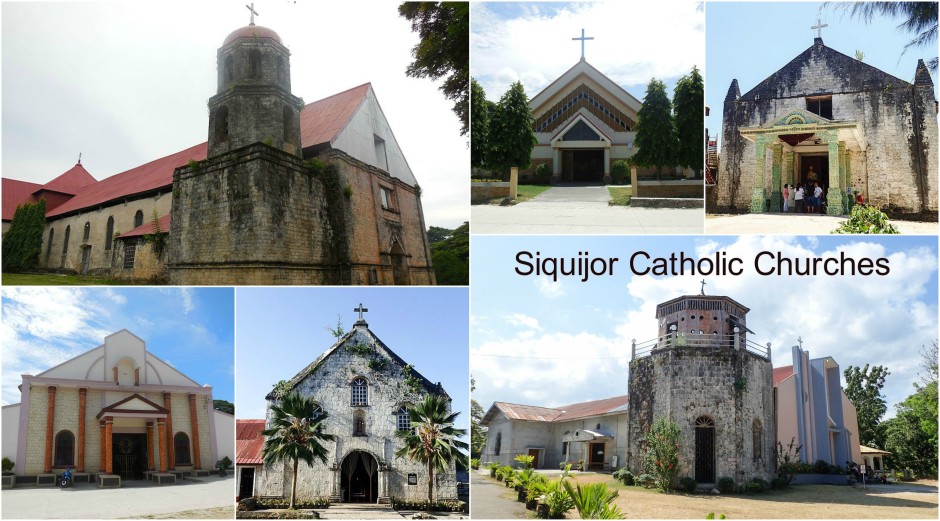

 Source:
Source:  Source:
Source:  Source:
Source:  Source:
Source:  Source:
Source:  Source:
Source:  Source:
Source: 